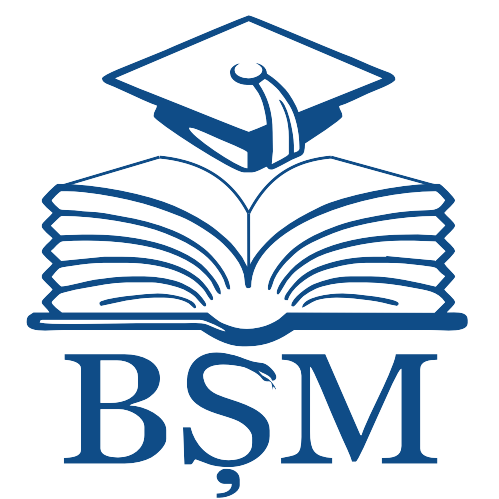|
|
- IRMS - Nicolae Testemitanu SUMPh
- 1. COLECȚIA INSTITUȚIONALĂ
- Revista de Științe ale Sănătății din Moldova
- Revista de Științe ale Sănătății din Moldova : Moldovan Journal of Health Sciences 2024 Vol. 11, Issue 2
Please use this identifier to cite or link to this item:
http://hdl.handle.net/20.500.12710/29844
| Title: | Sindromul algic la pacienți cu dereglări temporomandibulare degenerative |
| Other Titles: | Pain syndrome in patients with degenerative temporomandibular disorders |
| Authors: | Nistor, Lilian
Gribenco, Vitalie
Vasiliu, Valeria
Varban, Alexandru
Fala, Valeriu |
| Keywords: | temporomandibular disorders;degenerative joint disease;central sensitization;pain experience |
| Issue Date: | 2024 |
| Publisher: | Instituţia Publică Universitatea de Stat de Medicină şi Farmacie „Nicolae Testemiţanu” din Republica Moldova |
| Citation: | NISTOR, Lilian; GRIBENCO, Vitalie; VASILIU, Valeria; VARBAN, Alexandru; FALA, Valeriu. Sindromul algic la pacienți cu dereglări temporomandibulare degenerative = Pain syndrome in patients with degenerative temporomandibular disorders. In: Revista de Ştiinţe ale Sănătăţii din Moldova = Moldovan Journal of Health Sciences. 2024, vol. 11(3), an. 2, p. 845. ISSN 2345-1467. |
| Abstract: | Introducere. Boala degenerativă articulară (BDA) este un
subtip de dereglare temporomandibulară, caracterizat prin
degenerarea elementelor sistemului articular, cu o prevalență de 10% în populația adultă. Sindromul algic asociat
este insuficient studiat privind intensitatea, frecvența și
extinderea de manifestare la persoanele afectate de BDA.
Scopul lucrării. Identificarea aspectelor sindromului algic cu manifestare diferită la pacienți cu forme diferite de
dereglări temporomandibulare (degenerative/miogen-artrogene). Material și metode. Au fost examinați 29 de pacienți cu BDA și 51 pacienți cu dereglări temporomandibulare miogen-artrogene (diagnostic prestabilit în baza DC/
TMD). Experiența durerii a fost evaluată prin măsurarea intensității durerii (GCPS 2.0), frecvența/durata (SSI), gradul
de sensitizarea centrală (CSI-9), extinderea durerii (WPI).
Analiza statistică a datelor s-a bazat pe testul Mann-Whitney. Rezultate. Structura tabloului clinic la pacienți cu BDA
față de cei cu dereglări miogen-artrogene reprezintă un
spectru variat de expresie diferită a descriptorilor durerii,
cu o tendință de agravare a experienței durerii la nivel de
articulație temporomandibulară. Frecvența durerilor articulare este statistic semnificativ mai înaltă la pacienții cu
BDA (p = 0.036). Nu s-au observat diferențe semnificative
privind extinderea durerilor extra-stomatognatic. Concluzii. Rezultatele reconfirmă ipotezele din literatura de specialitate despre suprapunerea și intercalarea frecventă a
formelor miogen-artrogene cu cele degenerative, acestea de
fapt reprezentând probabil faze diferite ale aceluiași proces
continuu destructiv la nivel de articulație temporomandibulară.
Background. Degenerative joint disease (DJD) is a subtype
of temporomandibular disorder, characterized by degeneration of the elements of the joint system, with a prevalence of 10% in the adult population. The associated pain
syndrome is insufficiently studied regarding the intensity,
frequency and extent of manifestation in people affected
by DJD. Objective of the study. Identifying the aspects of
the pain syndrome with different manifestations in patients with different forms of temporomandibular disorders (degenerative/myogenous-arthrogenous). Material
and methods. 29 patients with DJD and 51 patients with
myogenous-arthrogenous temporomandibular disorders
(diagnosis based on DC/TMD) were examined. Pain experience was assessed by measuring pain intensity (GCPS 2.0),
frequency/duration (SSI), degree of central sensitization
(CSI-9), extent of pain (WPI). Statistical analysis of the data
was based on the Mann-Whitney test. Results. The structure of the clinical picture in patients with BDA compared to
those with myogenous-arthrogenous disorders represents
a varied spectrum of different expression of pain descriptors, with a tendency of worse pain experience at the level of the temporomandibular joint. The frequency of joint
pain is statistically significantly higher in BDA patients (p =
0.036). No significant differences were observed regarding
the extent of extra-stomatognathic pain. Conclusion. The
results reconfirm the hypotheses from the specialized literature about the overlapping and frequent intercalation of
the myogenous-arthrogenous forms with the degenerative
ones, thus these may actually represent different phases of
the same continuous destructive process at the level of the
temporomandibular joint. |
| metadata.dc.relation.ispartof: | Revista de Științe ale Sănătății din Moldova = Moldovan Journal of Health Sciences |
| URI: | https://cercetare.usmf.md/sites/default/files/inline-files/MJHS_11_3_2024_anexa2__site.pdf
https://repository.usmf.md/handle/20.500.12710/29844 |
| ISSN: | 2345-1467 |
| Appears in Collections: | Revista de Științe ale Sănătății din Moldova : Moldovan Journal of Health Sciences 2024 Vol. 11, Issue 2
|
Items in DSpace are protected by copyright, with all rights reserved, unless otherwise indicated.
|


